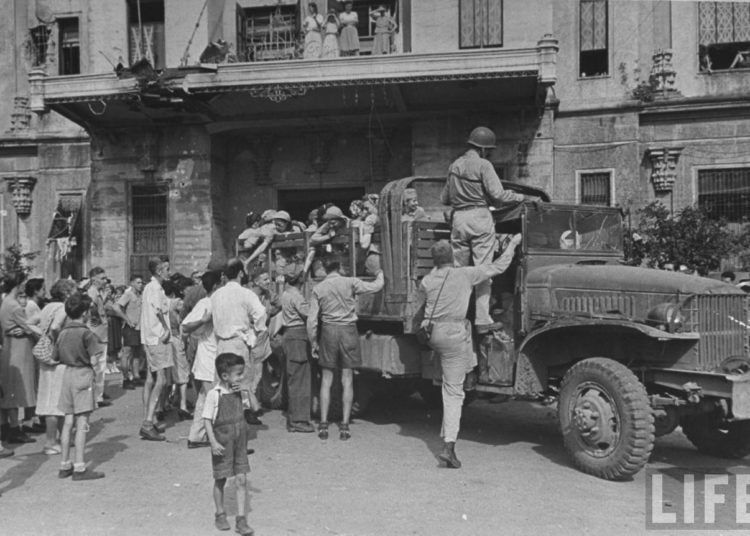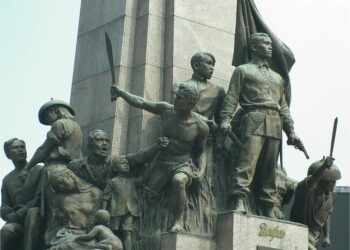IT was May 11th 1942 when Capt. Ethel Sally Blaine Millett, nine other Army nurses and three other women were officially captured by the Japanese at the USAFFE base hospital in Cagayan.
“We stayed there until July… We were taken from Cagayan and we went to Davao by a dirty little boat,” she said.
On that boat, she said they were joined by missionaries, including a certain Mr. Downes who had lived in Japan for 27 years and who could speak Nihongo fluently.

“So we were on that boat for about 4 days. It was a dirty, filthy boat…We had fresh water to drink but we couldn’t shower. I got a bath by using my share of a canteen of water and a girlfriend gave me her share of water and one of the men gave me his canteen,” she said.
They reached Davao on Aug. 26th 1942. From there, they were shipped to Manila, a group of 25 Americans.
This time, it was a cleaner ship and Millett had a more pleasant experience.
While en route to Manila, she had a high fever and could not eat her meals. She was fortunate to have Evelyn Whitlow by her side to look after her. As well, a Japanese medic came by to take her temperature and assisted Whitlow in getting ice in the galley for her ice bag.
“And he came back with some pills for me, and he carried some water and gave me a glass of water. Now I call that being humane. It was sure compassionate. Contrary to what you would expect,” she said.
Soon, the ship reached Manila. A friend of hers told her to see Bert Holland as soon as she arrived at Santo Tomas. As she got off the bus, there he was, Albert Holland assisting the incoming internees with their belongings.
Still reeling from the bout of malaria she contracted while she was in Bataan, Millett went straight to the hospital.
At the internment camp, Millett said they each had a duty to do. “Everyone was supposed to work that was able bodied.”
Because she was sick so much with malaria, she couldn’t work four hours but she could scrub the pigeon droppings off the corrugated roof. As the pigeons roosted on the roof and leave behind their droppings and in their wake a repugnant odor circulates in the room.
“I remember I had that duty more than anyone else because I was sick so much with malaria. I couldn’t work four hours but I could scrub the pigeon dung.
As for food, Millett said they would have “wormy rice.” Those with money could get fresh coconut milk for their cereals.
“We had cracked wheat which to me was tasty but it had more worms than the rice had. And for noonday meal I don’t think they ever served even a soup to anyone. But at evening time we’d have rice again. Always rice. We never had, as I recall, cracked wheat at nightitme. You would be given rice. The meat was caribou meat.”
Moreover, the internees would sometimes steal from the Japanese if they could, as in the case when a friend of hers snuck in the Japanese pantry close to their cabin and took the carabao liver and made it into a soup. There was this other internee, Dick, who stole sugar and hid it under the floor of his shanty.
“Everyone stole from the Japanese, if they could,” said Millett.
In the camp, Millett said they were self-governing, very organized. “We had the central committee.” She said they had more restrictions than privileges.
She said they had a Japanese commandant with two or three people under him. And then they had the camp committee who served as intermediary between the Japanese and the internees.
As the Japanese were not affectionate, a rule was enforced to avoid showing affection in public. But when the internees were allowed to have their shanties constructed, where they could stay in the daytime in the beginning, until the main building became overcrowded that necessitated the use of the shanties even at night, the problem began: birthrate increased.
We had a lot of babies born in Santo Tomas…Every new baby meant another mouth to feed. And when the mother was pregnant, she was given food . So it wasn’t really quite fair. Women who got pregnant weren’t very popular, and the men who got them pregnant, if they found out who it was, were put on the rice and water diet for a while. They locked them up. That was humorous.”
Meanwhile, Millett’s interviewer asked her if ever she knew of any soldier among them at the camp, to this she confirmed having known some, including Edgar Whitcomb who managed to escape to the United States and come back to the Philippines.

She also knew of another military guy who some internees turned in for an infraction Millett was not aware of. This man in turn squealed with the Japanese commandant the names of the other military men in the camp.
Millett said it was a big risk for the military men to stay in camp and their discovery by the Japanese could mean death for them.
Millett had a lot of stories to share her interviewer.
On February 4th 1945, Millett said they had gone to bed that night when they heard a commotion. They couldn’t see clearly because they were in a blackout. They went downstairs to discover the Americans had arrived. Tanks had barged into the camp to liberate the prisoners of war.
They were able to get out of camp after sorting out their repatriation details on Feb. 12. A C-46, Millett said, was to take them out of Manila. On Mindoro island, they transferred to a C-47 that took them to Tacloban where they had all medical testing and where they were recognized in a promotion ceremony.
From Leyte, they flew to Kwajalein in the Marshalls, then to Honolulu, Hawaii, and San Francisco.
She was reassigned to serve in Florida where she met and married another prisoner of war, George V. Millett Jr., a paratrooper during the Normandy invasion. Sadly, Sally Millett was widowed in 1955. She had two sons, George Millett III and William.
On March 8, 2005, at the age of 90, Millett suffered from a congestive heart failure and passed away. She was buried at Arlington National Cemetery.










